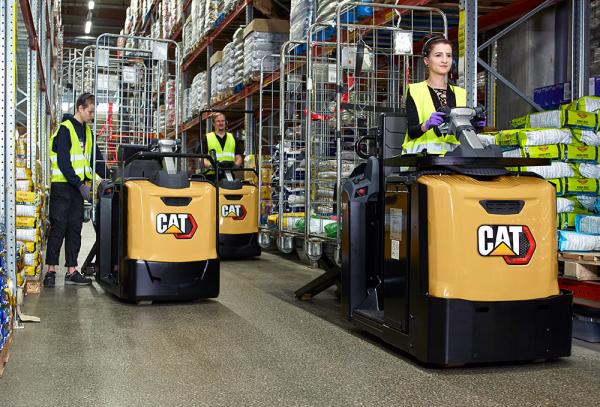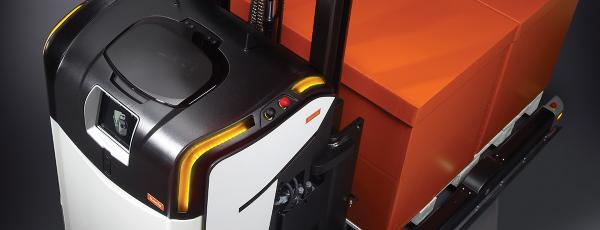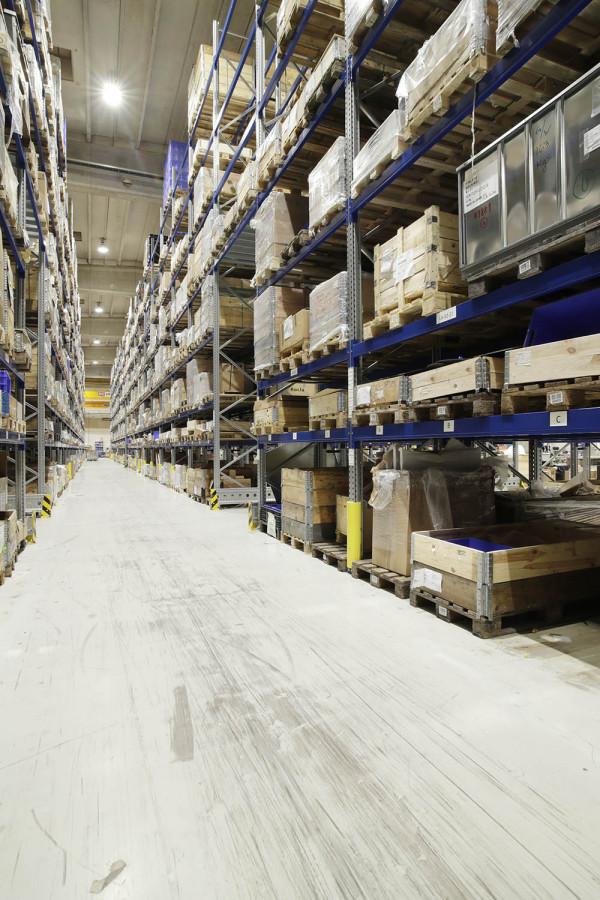This year has seen unprecedented changes in our lives and the way we work thanks to the COVID-19 pandemic. The crisis has placed a huge amount of stress on supply chains and whilst a lot of focus has been on the response of the transport industry, warehousing and logistics has also experienced enormous challenges. Here at Cat® Lift Trucks we have taken a look at some of the changes that have occurred as a result of the pandemic, and what their lasting effects may be on our industry.
Erik Koudijs, Managing Director of Logisnext Netherlands and representing Cat® Lift Trucks in The Netherlands, told us about the changes he has already seen.
Koudijs said, “we’ve seen firm delays and shifts of order-trend within industries, with hardly any cancellation. Short term rental is booming due to the extreme demand on certain industries, for example food and DIY, and requests for information and quotations on AGV, automation and robotization has increased significantly”.
Koudijs continued, “when it comes to processes, order picking tasks that are normally handled by two people have become one-person tasks with mechanical assistance. This is due to social distancing measures and has meant an increasing reliance on technologies. E-commerce has been particularly affected as more and more people turn to online shopping, which has in turn increased the amount of returns e-commerce companies are having to process”.
Below, we explore these changes further.
Ongoing changes in consumer behaviour
Perhaps one of the most notable changes in 2020 has been the way in which consumers shopping behaviour has impacted on the traditional retail sector, with millions moving to online. As Koudijs mentioned, logistics firms have been directly affected as a result of this change and have seen a huge increase in demand for accurate, fast turn-around. This uplift in online sales is a trend that looks set to continue as consumers realise the convenience of e-commerce, especially in the groceries sector, leaving the plight of the high street and traditional retail unknown as we move into the future.
Flexibility to deal with major demand swings
Although most warehouses are used to seasonal demand changes or variability in demand throughout the year – when the lockdown occurred in March, warehouses saw huge demand swings, both upwards and downwards due mainly to the rise in e-commerce, and most weren’t that well equipped to deal with it. The warehouses that have benefited from the pandemic have had to face major challenges and adapt swiftly. On the flip side, because certain types of businesses were forced to shut down as a result of COVID-19 mandates, companies that supply those industries affected (e.g. restaurants, office supplies), were severely impacted and saw stock piling up and staff being furloughed as a result.
Changes in demand will continue to happen as we go into 2021 and so warehouses need to ensure that they are adaptable. Good planning, robust technology and efficient warehouse management systems will be paramount to ensure the smooth process of getting goods into and out of the warehouse in a timed manner.
Investment in the right technology to stay ahead
Lockdown saw various activities within logistics increase beyond expectations and most rely heavily on the latest technology. Methods such as dropshipping (direct-to-consumer sales), saw a massive expansion of growth from online e-commerce, allowing manufacturers to gain better control of their supply chain and increase profit margins; and the complex area of reverse logistics, has had to operate at a whole new level as the volume of returns increased enormously.
These trends will continue, and warehouses will need to adapt as people want goods faster, more efficiently and with better choice, than ever before. Not only that but incoming stock as well as being checked and approved, has also had to be ‘isolated’ or quarantined for safety purposes. The whole process has had to have been rapidly rethought and so investment in up-to-date, responsive technology will be increasingly important for adaption, accuracy, and mistake avoidance.
Increase in staff safety measures and flexible staffing
Due to the lockdown, many warehouses and logistic companies needed to adapt their staffing levels. Those companies that saw huge demand rises also needed to make large staffing adjustments very rapidly. Where most deal with seasonal workers and have standard training and onboarding programmes in place, they have had to adapt their procedures to bring employees up to speed more quickly and safely. This has included new ways of working within the warehouses and work spaces due to social distancing requirements for all staff. Managers have had to become far more flexible at managing frequent changes in staffing rotas due to employees needing to isolate or take time off as a result of COVID-19 as well as pay more attention to staff well-being as fear levels and uncertainty regarding the virus remain high.
As we go into the next year, alongside the strict social distancing measures still enforced at ground level, technology will be paramount in workers safety. Efficient technology will reduce the reliance on human resources, allowing warehouses to operate with fewer staff by increasing automation and allowing employees to work safely in separate designated zones.
A demand for warehousing space
In other areas that have faced changes within warehousing and logistics, most rely on the need for digitalisation and improvement on existing technology, such as better fleet planning for multiple home deliveries and fast and accurate flexible picking methods to cope with huge rises in e-commerce orders. However, there has also been a huge increase in demand for warehousing space. A trend towards the use of larger warehouses is likely to be seen to cope with demand for space as stock is taken out of the high street and out-of-town shopping centres and into the warehouses. Additionally, warehousing locations may move closer to urban areas so that companies are not so reliant on just-in-time models.
A lasting change?
One thing we can learn from the way Coronavirus has impacted warehousing and logistics according to Koudijs is that suppliers need to be more flexible. As we slowly emerge from the grips of lockdown and the pandemic, the changes made as a result of the crisis make it quite likely that some aspects of logistics and warehousing will never be the same again.
Koudijs said, “I expect that most of these changes will eventually revert back to normal. However, I think more flexible financing of assets is here to stay and dependencies on human labor will fiercely fade out as demand for robotization and automation increases”.
Koudijs continued, “what we can take away from this is that suppliers need to be more flexible with the financing of capital goods. It has shown us, as a supplier, that we need to focus more on flexibility as we face rapid changes in demand; demand for additional (rental) trucks on one side and huge demand to pause firm leasing contracts on the other”.



